-
 Bitcoin
Bitcoin $116900
0.00% -
 Ethereum
Ethereum $4280
5.48% -
 XRP
XRP $3.265
-1.45% -
 Tether USDt
Tether USDt $1.000
-0.01% -
 BNB
BNB $807.0
1.41% -
 Solana
Solana $183.1
2.93% -
 USDC
USDC $0.9999
0.00% -
 Dogecoin
Dogecoin $0.2440
6.50% -
 TRON
TRON $0.3357
-0.88% -
 Cardano
Cardano $0.8178
2.63% -
 Hyperliquid
Hyperliquid $44.13
7.45% -
 Chainlink
Chainlink $21.39
9.09% -
 Stellar
Stellar $0.4524
-0.84% -
 Sui
Sui $3.957
2.13% -
 Bitcoin Cash
Bitcoin Cash $572.7
-2.54% -
 Hedera
Hedera $0.2671
1.54% -
 Avalanche
Avalanche $24.77
4.17% -
 Ethena USDe
Ethena USDe $1.001
0.02% -
 Litecoin
Litecoin $122.3
-1.94% -
 Toncoin
Toncoin $3.432
2.26% -
 UNUS SED LEO
UNUS SED LEO $9.007
0.49% -
 Shiba Inu
Shiba Inu $0.00001396
5.26% -
 Uniswap
Uniswap $11.09
1.64% -
 Polkadot
Polkadot $4.155
4.57% -
 Dai
Dai $1.000
0.00% -
 Pepe
Pepe $0.00001253
5.11% -
 Cronos
Cronos $0.1588
2.67% -
 Bitget Token
Bitget Token $4.512
0.05% -
 Monero
Monero $275.0
0.64% -
 Ethena
Ethena $0.7527
15.10%
Which blockchains is USDT based on?
USDT, a multi-chain stablecoin, operates on Ethereum, Tron, Solana, EOS, Algorand, and Omni, offering users choices based on speed, cost, and security priorities; however, tokens aren't interchangeable between chains.
Mar 14, 2025 at 10:21 am
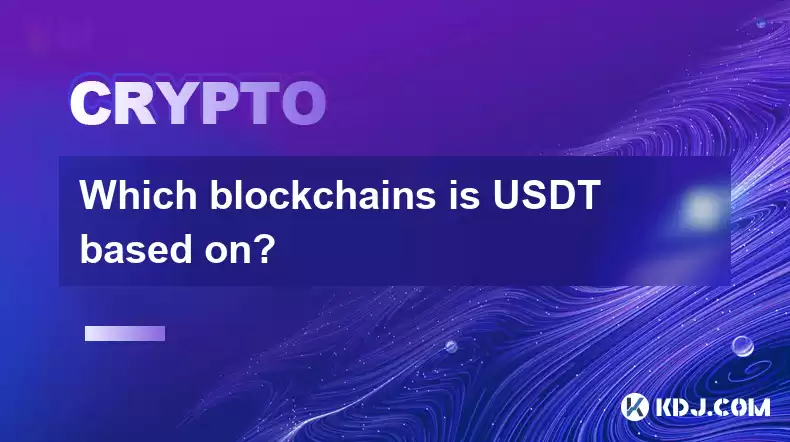
Key Points:
- Tether (USDT) is not solely based on one blockchain. It's a multi-chain stablecoin, meaning it exists on several different blockchain networks.
- The primary blockchains supporting USDT include Ethereum, Tron, and Solana. Others include EOS, Algorand, and Omni.
- Each USDT token on a different blockchain represents a claim on the same underlying reserves, theoretically maintaining a 1:1 peg to the US dollar.
- Differences exist in transaction fees, speeds, and network congestion across these various blockchains.
- Choosing a blockchain for USDT transactions depends on individual priorities, balancing speed, cost, and security considerations.
Which Blockchains is USDT Based On?
Tether (USDT), one of the largest stablecoins by market capitalization, isn't confined to a single blockchain. Its multi-chain nature allows for greater flexibility and accessibility for users. This design addresses limitations inherent in single-blockchain stablecoins, enabling faster and potentially cheaper transactions depending on network conditions. The availability across various blockchains makes it more widely usable within the broader cryptocurrency ecosystem.
Ethereum (ERC-20): Initially, USDT was issued as an ERC-20 token on the Ethereum blockchain. This provided a foundation for its early adoption and integration with numerous decentralized applications (dApps) and exchanges. However, high transaction fees and network congestion on Ethereum can sometimes impact the usability of USDT on this chain.
Tron (TRC-20): USDT's presence on the Tron blockchain offers a significantly cheaper and faster alternative compared to Ethereum. Tron's higher transaction throughput and lower fees make it an attractive option for users prioritizing speed and cost-effectiveness. This has contributed to USDT's substantial growth on the Tron network.
Solana (SPL): The Solana blockchain provides another high-throughput environment for USDT. Known for its speed and scalability, Solana aims to address the limitations of other networks concerning transaction processing times and fees. USDT's integration into Solana's ecosystem expands its reach to a growing community of users.
Other Blockchains:
Beyond Ethereum, Tron, and Solana, USDT also operates on several other blockchains. These include:
- EOS: The EOS blockchain offers a unique architecture designed for high performance and scalability. USDT's presence on EOS expands its reach within the EOS ecosystem.
- Algorand: This blockchain prioritizes speed, security, and scalability. USDT’s presence here offers users another option with a focus on these specific qualities.
- Omni: One of the earlier blockchains to support USDT, Omni Layer is built on top of the Bitcoin blockchain. While offering security through Bitcoin's infrastructure, it might present slower transaction speeds and higher fees than other options.
Choosing the Right Blockchain for USDT:
The optimal blockchain for using USDT depends on individual priorities.
- Prioritize Speed and Low Fees: Tron and Solana generally offer faster transaction times and lower fees than Ethereum.
- Prioritize Decentralization and Established Ecosystem: Ethereum, despite higher fees, benefits from a mature and widely adopted ecosystem.
- Prioritize Security: All mentioned blockchains have their own security mechanisms. However, the security of the underlying blockchain does not directly influence the peg stability of USDT.
- Consider Network Congestion: Network congestion can impact transaction speeds and fees on all blockchains.
How are USDT reserves managed across different blockchains?
Tether maintains that all USDT tokens, regardless of the blockchain they reside on, are backed by a 1:1 reserve of US dollars and other assets. The management of these reserves is a subject of ongoing scrutiny and debate within the cryptocurrency community. The company publishes regular reports aiming to demonstrate the backing of its tokens.
What are the risks associated with using USDT on different blockchains?
The risks associated with USDT are not inherently tied to the specific blockchain. The primary risks include the potential for de-pegging from the US dollar, which could lead to significant losses. Additionally, the security of the specific blockchain itself is a factor. Smart contract vulnerabilities on any given blockchain could theoretically impact USDT tokens on that chain.
Are USDT tokens interchangeable between different blockchains?
No, USDT tokens are not directly interchangeable between different blockchains. A USDT token on Ethereum (ERC-20) is distinct from a USDT token on Tron (TRC-20) or Solana (SPL). To move USDT between blockchains, users must bridge them through specialized services, which typically involves paying transaction fees on both the sending and receiving chains.
What are the transaction fees like for USDT on different blockchains?
Transaction fees vary significantly depending on the blockchain. Ethereum often has higher fees compared to Tron and Solana, which generally offer lower-cost transactions. However, fees can fluctuate based on network congestion. The specific fee amount will also depend on the size of the transaction.
Does the blockchain affect the stability of USDT?
While the underlying blockchain's security and stability are important factors in the overall functionality of USDT, they do not directly influence the 1:1 peg to the US dollar. The stability of USDT is primarily determined by the management of its reserves and the overall trust in Tether's operations.
Disclaimer:info@kdj.com
The information provided is not trading advice. kdj.com does not assume any responsibility for any investments made based on the information provided in this article. Cryptocurrencies are highly volatile and it is highly recommended that you invest with caution after thorough research!
If you believe that the content used on this website infringes your copyright, please contact us immediately (info@kdj.com) and we will delete it promptly.
- Shiba Inu, Pepe, and Remittix: A Tale of Memes, Hype, and Real-World Utility
- 2025-08-10 08:30:12
- Ethereum Price, ETH Tokens, Rally Prediction: Is a New All-Time High In Sight?
- 2025-08-10 08:30:12
- XRP, Elon Musk, and Wealth: A Crypto Conundrum
- 2025-08-10 08:50:12
- Retire Early with Crypto: High-Conviction Plays Beyond Bitcoin
- 2025-08-10 08:50:12
- BlockDAG, Render, and Polkadot: Charting the Course for Long-Term Crypto Dominance
- 2025-08-10 08:55:21
- Toncoin's Ascent: Price Predictions and the VERB Strategy Impact
- 2025-08-10 08:55:21
Related knowledge
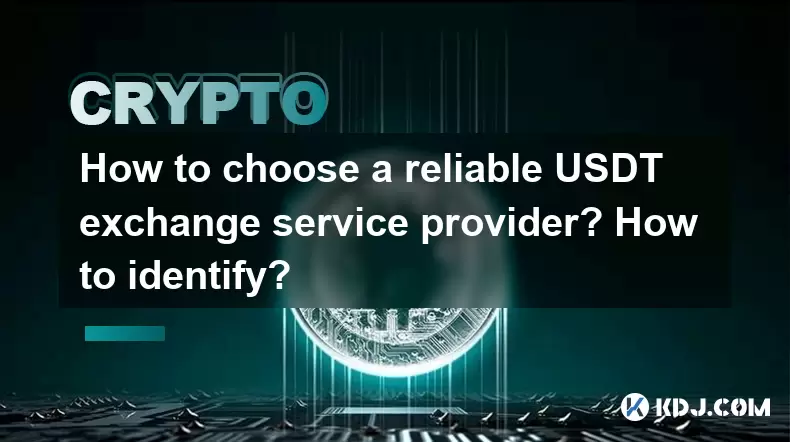
How to choose a reliable USDT exchange service provider? How to identify?
Jun 12,2025 at 03:15pm
Understanding the Role of USDT in Cryptocurrency TradingUSDT (Tether) is one of the most widely used stablecoins in the cryptocurrency market. It is d...
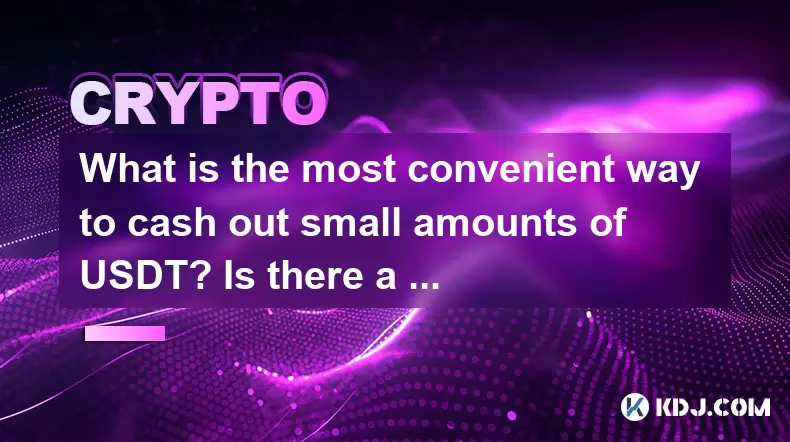
What is the most convenient way to cash out small amounts of USDT? Is there a shortcut?
Jun 11,2025 at 11:00pm
Understanding the Need to Cash Out Small USDT AmountsCashing out small amounts of USDT can be a challenge for many crypto users. Traditional methods o...
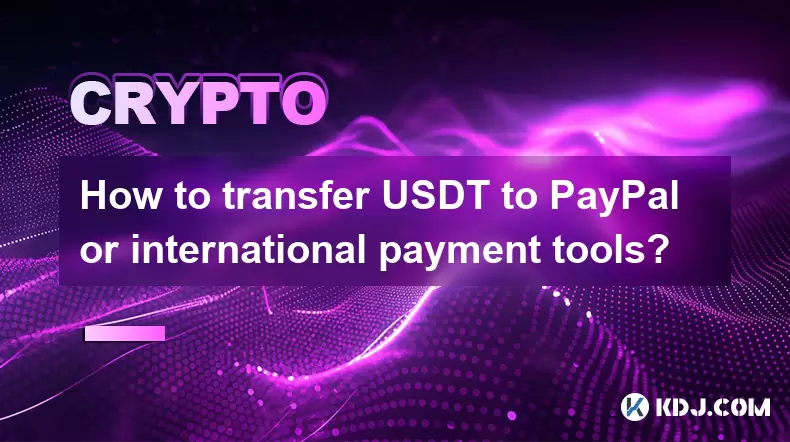
How to transfer USDT to PayPal or international payment tools?
Jun 15,2025 at 05:28am
Understanding the Basics of USDT and PayPal IntegrationUSDT (Tether) is a stablecoin pegged to the US dollar, offering blockchain-based value transfer...
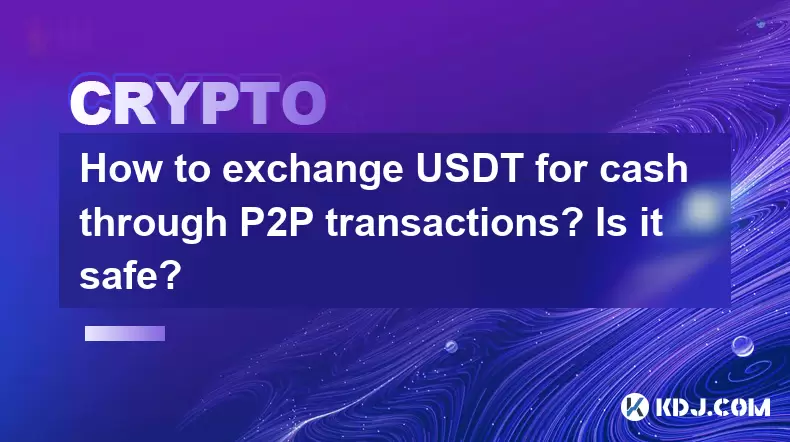
How to exchange USDT for cash through P2P transactions? Is it safe?
Jun 18,2025 at 07:56am
Understanding USDT and P2P TransactionsTether (USDT) is a stablecoin pegged to the value of the US dollar, making it a popular choice for users who wa...
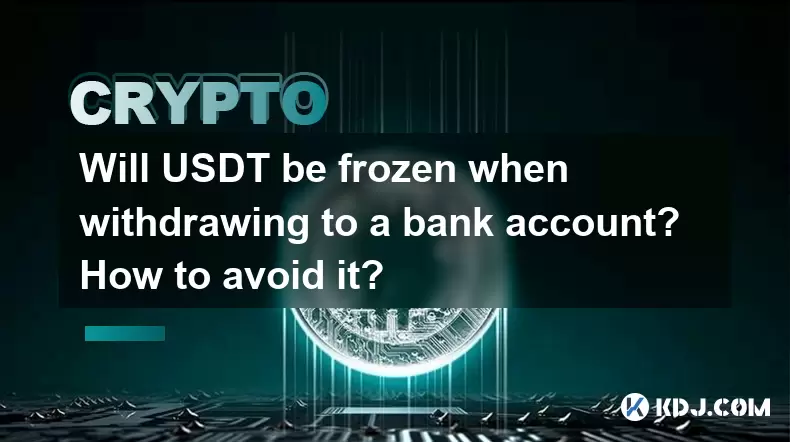
Will USDT be frozen when withdrawing to a bank account? How to avoid it?
Jun 15,2025 at 10:03am
Understanding USDT Withdrawals and Bank Account Freezing RisksWhen users decide to withdraw USDT (Tether) to a bank account, one of the most common co...
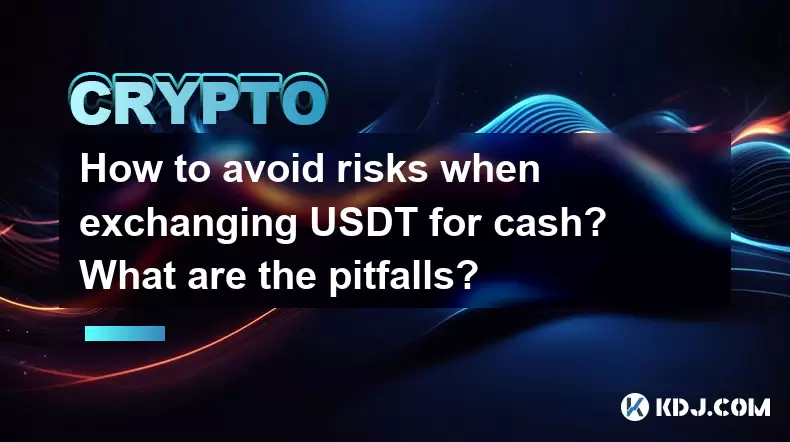
How to avoid risks when exchanging USDT for cash? What are the pitfalls?
Jun 11,2025 at 08:14pm
Understanding the Risks of Exchanging USDT for CashWhen exchanging USDT (Tether) for cash, users must be aware of the potential risks involved. As a s...

How to choose a reliable USDT exchange service provider? How to identify?
Jun 12,2025 at 03:15pm
Understanding the Role of USDT in Cryptocurrency TradingUSDT (Tether) is one of the most widely used stablecoins in the cryptocurrency market. It is d...

What is the most convenient way to cash out small amounts of USDT? Is there a shortcut?
Jun 11,2025 at 11:00pm
Understanding the Need to Cash Out Small USDT AmountsCashing out small amounts of USDT can be a challenge for many crypto users. Traditional methods o...

How to transfer USDT to PayPal or international payment tools?
Jun 15,2025 at 05:28am
Understanding the Basics of USDT and PayPal IntegrationUSDT (Tether) is a stablecoin pegged to the US dollar, offering blockchain-based value transfer...

How to exchange USDT for cash through P2P transactions? Is it safe?
Jun 18,2025 at 07:56am
Understanding USDT and P2P TransactionsTether (USDT) is a stablecoin pegged to the value of the US dollar, making it a popular choice for users who wa...

Will USDT be frozen when withdrawing to a bank account? How to avoid it?
Jun 15,2025 at 10:03am
Understanding USDT Withdrawals and Bank Account Freezing RisksWhen users decide to withdraw USDT (Tether) to a bank account, one of the most common co...

How to avoid risks when exchanging USDT for cash? What are the pitfalls?
Jun 11,2025 at 08:14pm
Understanding the Risks of Exchanging USDT for CashWhen exchanging USDT (Tether) for cash, users must be aware of the potential risks involved. As a s...
See all articles

























































































